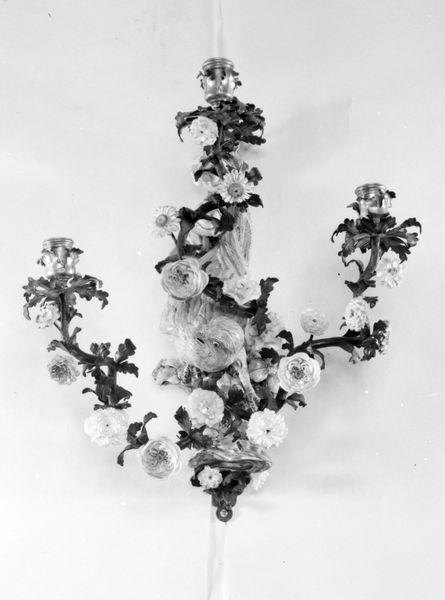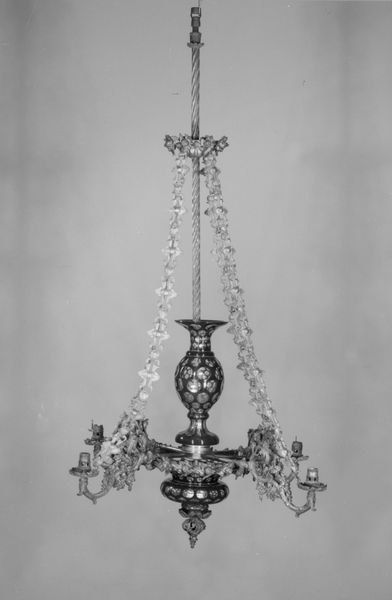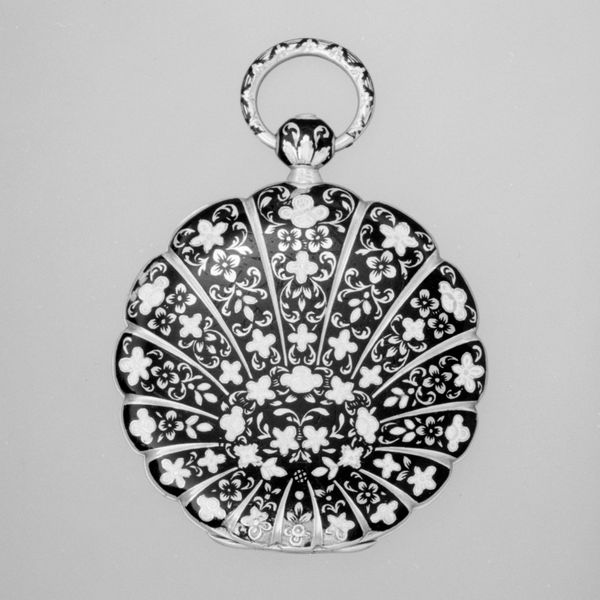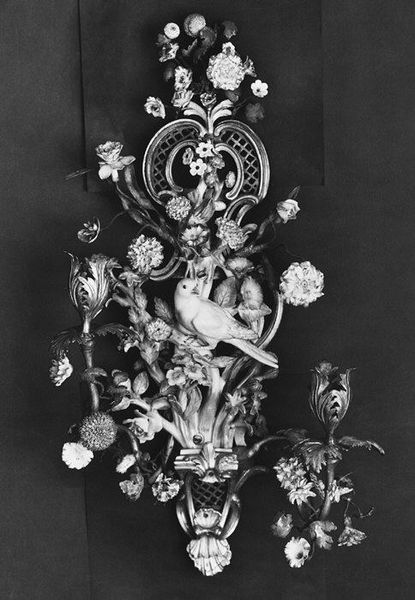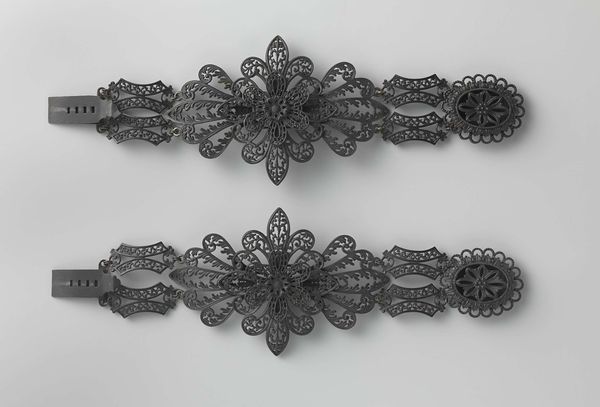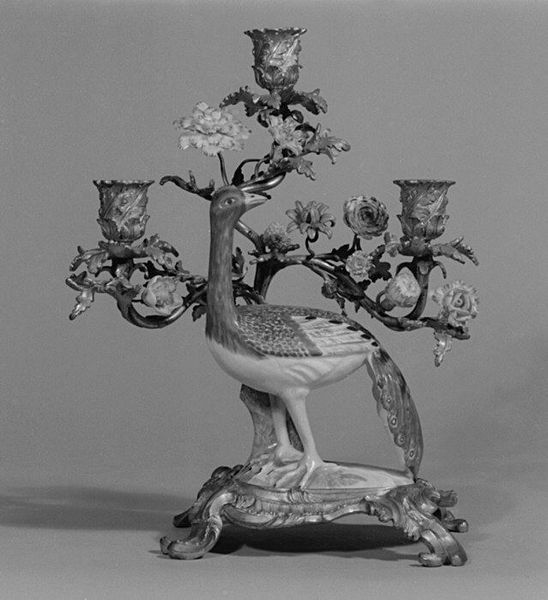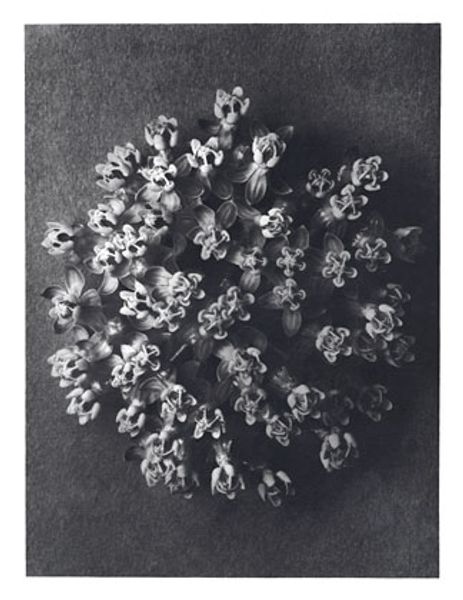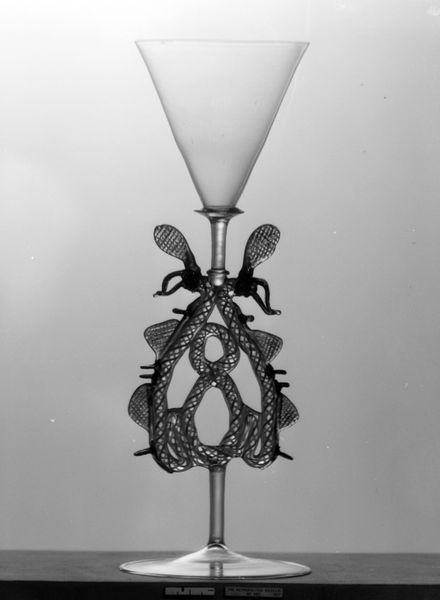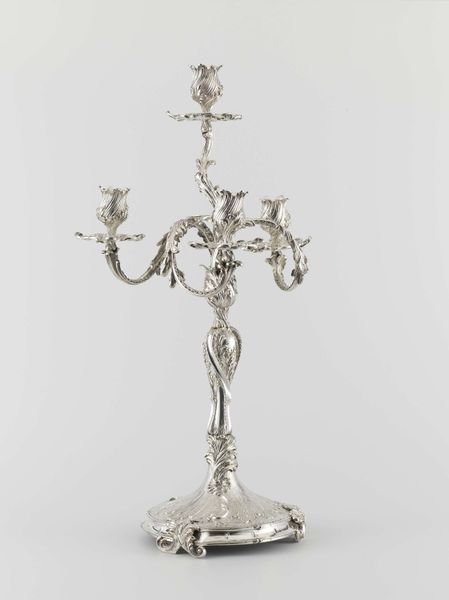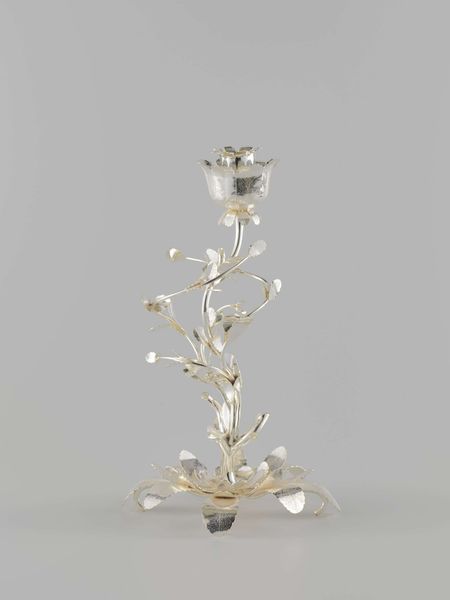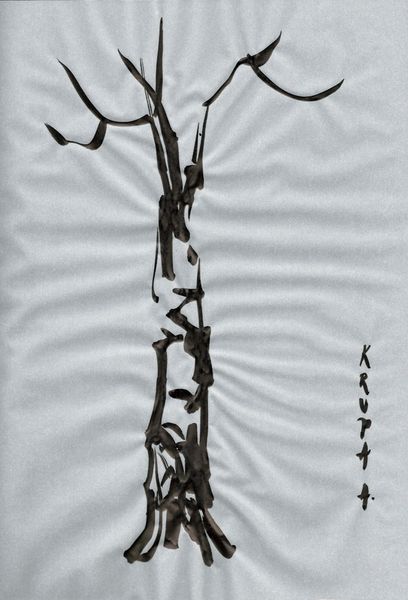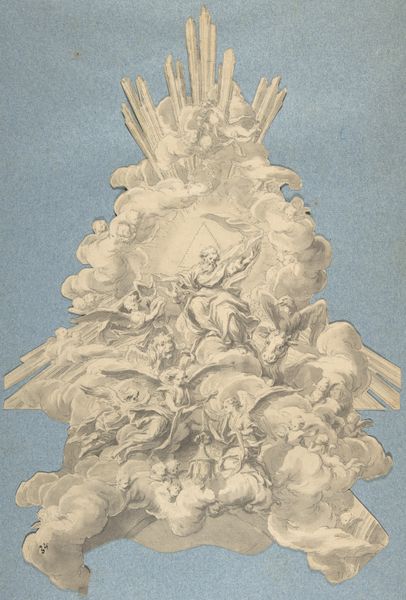
ceramic, porcelain, sculpture
#
sculpture
#
ceramic
#
bird
#
flower
#
ring
#
porcelain
#
sculpture
#
carved
#
decorative-art
#
rococo
Dimensions: 17 1/2 × 15 1/2 in. (44.5 × 39.4 cm)
Copyright: Public Domain
Curator: The “Wall light (one of a pair)” from around 1735-1745—now residing at the Met—strikes me first as a piece that is practically singing to me of springtime. What's your initial feeling about it? Editor: Ostentatious, undeniably, but look at the porcelain itself! What does this object represent in terms of craft? Here, the artist molded ceramic into intricate forms like birds, flowers, foliage. Can you imagine the workshop labor involved? Curator: Absolutely, it is decadent and beautiful. It feels as though the artist wanted to capture a moment of utter bloom. Porcelain becomes more than just a material here. Don't you think it turns almost dreamlike, evocative? Like a frozen waterfall of flora and fauna. Editor: Frozen, yes, yet also codified, signifying power, wealth, luxury. The flowers and the birds, the ring motifs--what do they really mean outside their obvious beauty when considering class structure? Who crafted each petal? Did they ever own one like it? Curator: It brings us smack into the complexity of beauty's creation, I agree! Each layer requires precision, the material’s delicacy amplifying the fragility and the temporality it evokes. Editor: Precisely! Note how its elegance almost contradicts the intensity of work. Do these delicate flowers hide a harsher reality of the labor that brings porcelain fantasies to life? Curator: Oh, those silent stories. It dances between natural exuberance and the stark control needed to bring it to form, right? But beyond labor implications, this wall light, in its ornate design, touches on a craving to make mundane spaces otherworldly, inviting moments of pure escapism. Editor: True. And those opposing views and experiences shaped the decorative arts then as now. Seeing how things were created really colors our interpretations, doesn't it?
Comments
No comments
Be the first to comment and join the conversation on the ultimate creative platform.

